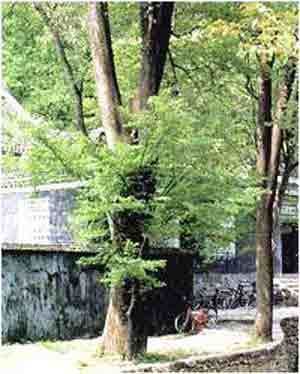Scientific name Ulmus gaussenii | Genus Ulmus Rank Species | |
 | ||
Similar Ulmus microcarpa, Ulmus chenmoui, Ulmus bergmanniana, Ulmus lamellosa, Ulmus changii | ||
Ulmus gaussenii , the Anhui, or Hairy, Elm, is a medium deciduous tree whose natural range is restricted to the valleys of limestone mountains in Anhui Province, eastern China. The tree was most commonly found on the flood plains, indicating a tolerance of periodic inundation. However, U. gaussenii is now possibly the rarest and most endangered elm species, with only approximately 30 trees known to survive in the wild. The tree was first introduced to the West in 1995, at the Morton Arboretum, Illinois, as part of an evaluation of Chinese elms for landscape use.
Contents
Description
The tree can grow to a height of about 25 m, with a slender trunk < 0.5 m d.b.h. The bark is longitudinally fissured and almost black. The glossy leaves are generally obovate, < 11 cm long, borne on densely pubescent reddish twigs, sometimes featuring flat corky wings. The wind-pollinated apetalous flowers appear in March, the large orbicular samarae < 28 mm diameter ripen in April.
Pests and diseases
The tree is resistant to Dutch elm disease and the Elm Leaf Beetle Xanthogaleruca luteola [4].
Cultivation
The species remains very rare in cultivation in the West. In artificial freezing tests at the Morton Arboretum the LT50 (temp. at which 50% of tissues die) was found to be -30.7 °C. The Anhui Elm was considered of particular interest, as its streamside habitat suggests it may tolerate low oxygen levels. Very few specimens are cultivated (2017) in Europe, notably in the UK and the Netherlands. There are no known cultivars of this taxon, nor is it known to be in commerce.
Etymology
The tree is named for Marcel-Henri Gaussen (1891–1981), a French botanist who travelled widely in Asia.
